
Hells
Gate - Learn how Hells Gate got its name,
and a bit about salmon fishing in BC
and a bit about salmon fishing in BC
The Two RV Gypsies: Full-Time RVers

|
Hells
Gate - Learn how Hells Gate got its name, and a bit about salmon fishing in BC |
On May 19, 2009, the two RV Gypsies enjoyed a spectacular drive through the scenic Fraser Canyon and its seven highway tunnels. The Fraser Canyon was full of folklore, legends, history and mystery; from the voyage of Simon Fraser to the historic Fraser River Gold Rush, the building of two railways and the linking of the coast lines of Canada via the Trans Canada Highway. There are also stories of hauntings at Hells Gate. |
|
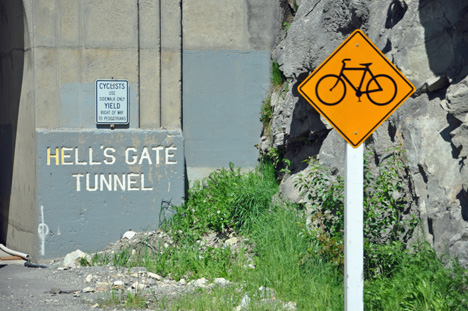 |
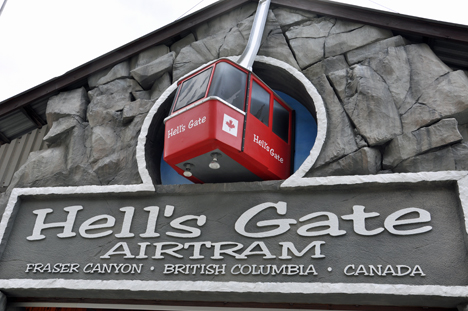 |
Hells Gate is an abrupt narrowing of British Columbia's Fraser River, located in the southern Fraser Canyon. The towering rock walls of the Fraser River plunge toward each other forcing the waters through a passage only 115 feet wide. It is also the name of the rural locality at the same location.
|
|
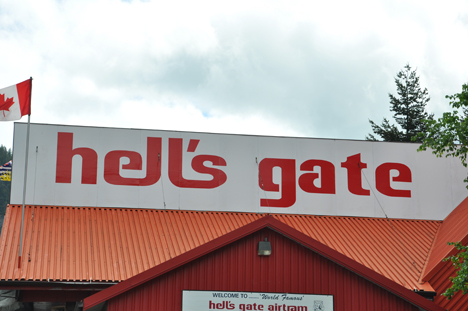 |
|
BELOW: A chain saw carving
at the top of the station |
|
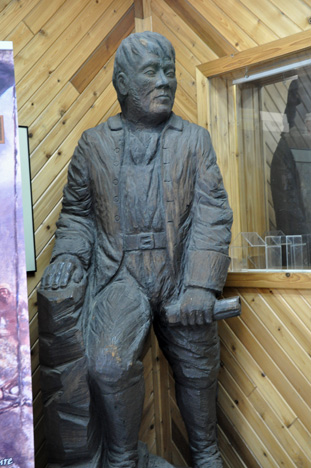 |
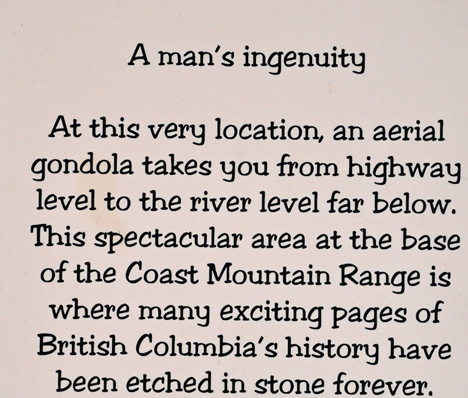 |
Below: The two RV Gypsies
took a tram ride down to the suspension bridge and observation deck to
get a look at the international fishways that flank Hell's Gate Gorge. |
|
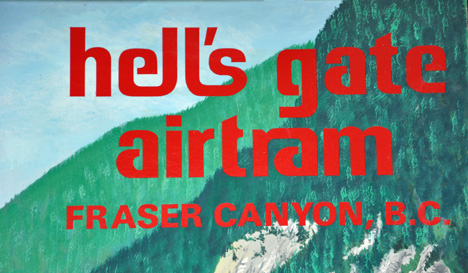 |
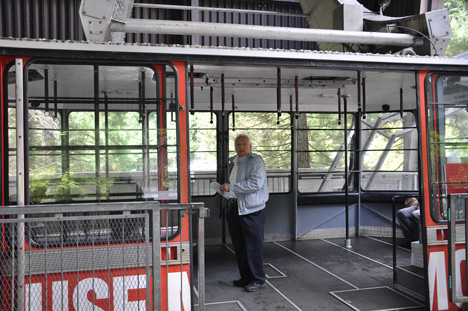 |
|
|
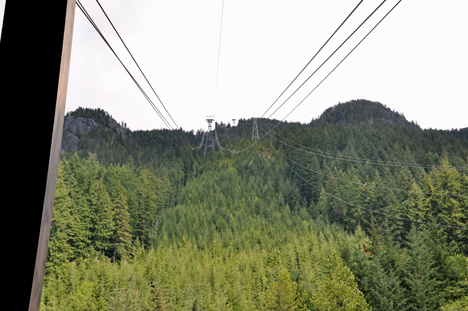 |
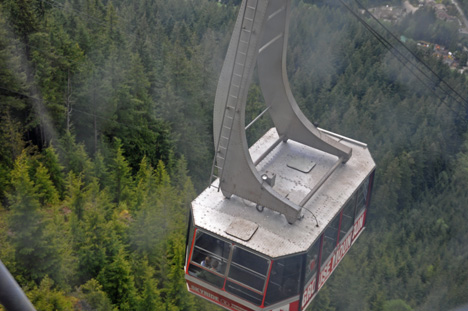 |
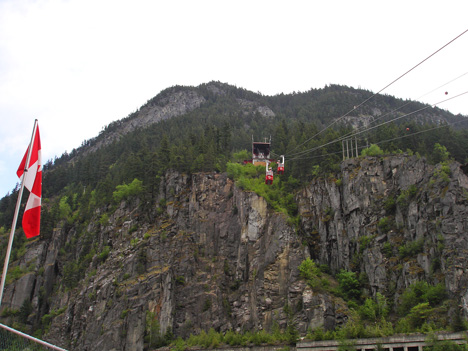 |
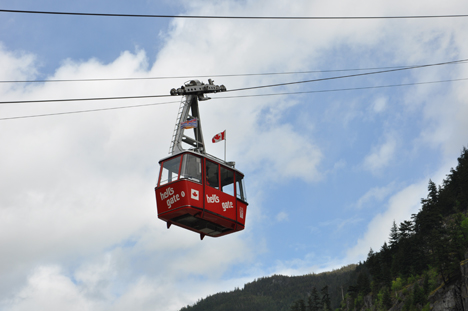 |
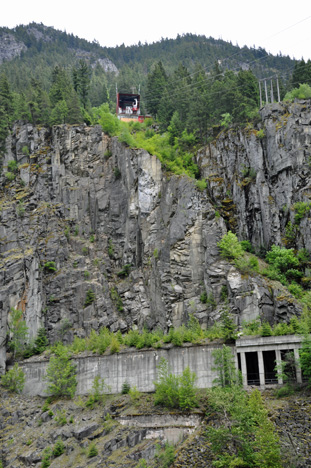 |
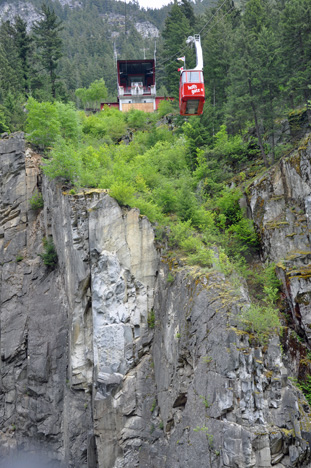 |
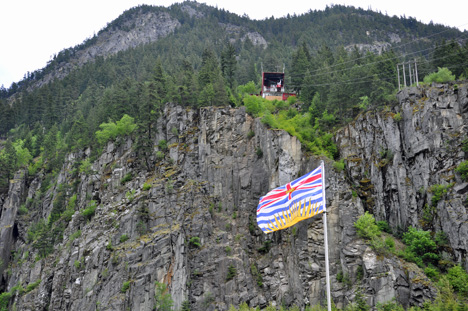 |
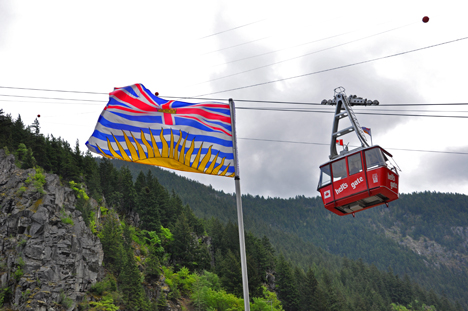 |
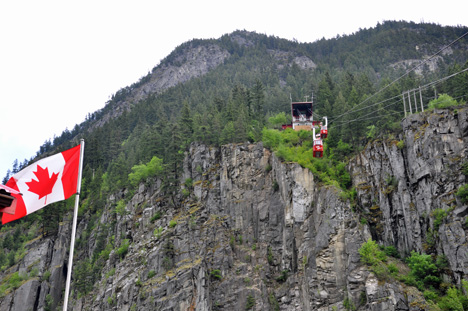 |
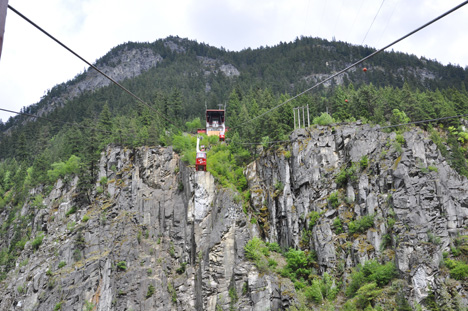 |
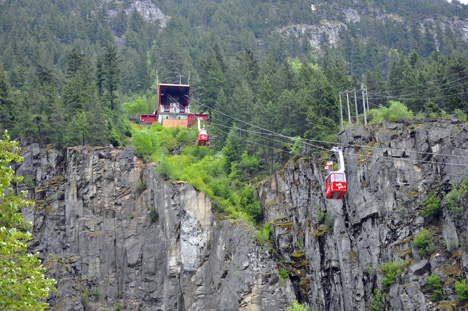 |
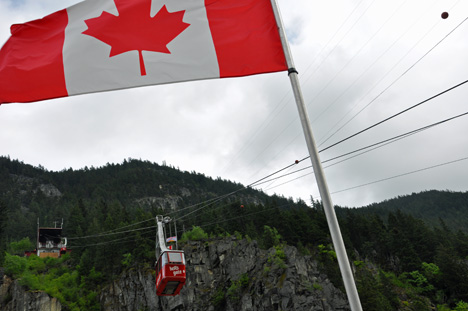 |
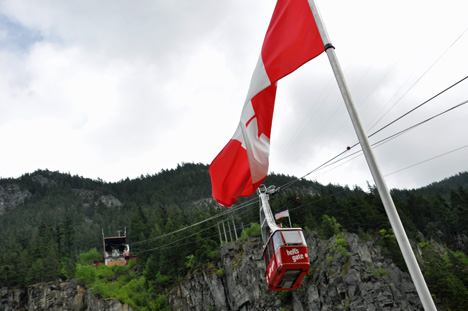 |
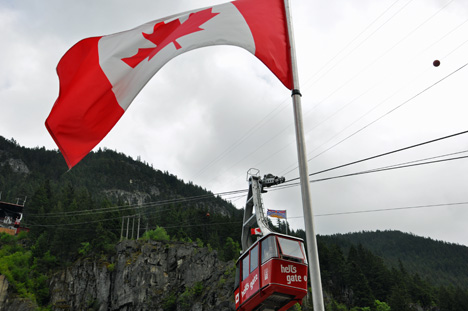 |
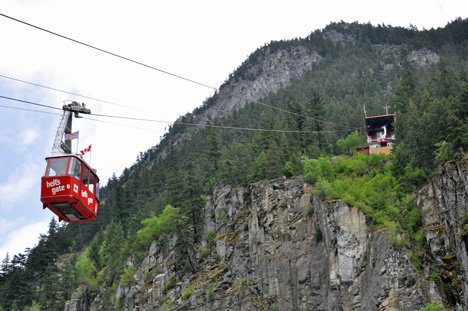 |
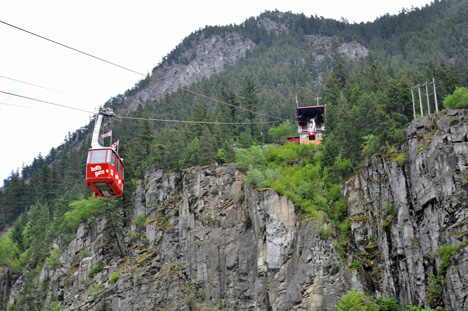 |
 |
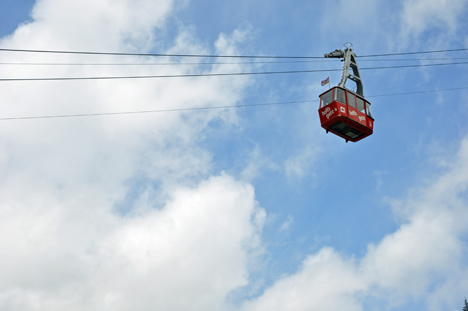 |
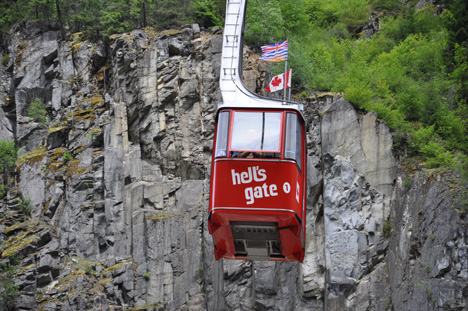 |
 |
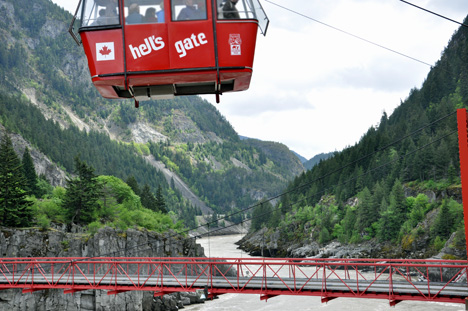 |
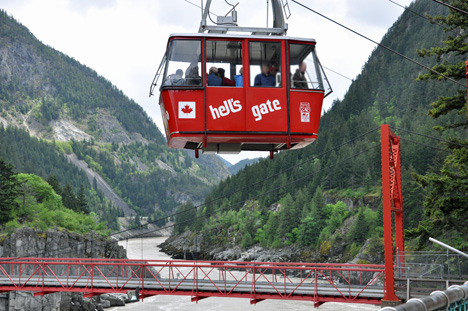 |
Below:
Views of Fraser River and the suspension bridge - taken from the tram
ride down |
|
 |
 |
 |
 |
Below: The Fraser River Gorge
at high level has 200 million gallons of water per minute rushing through
- that is twice the volume of Niagara Falls! Millions of salmon annually
navigate the treacherous waters en route to their spawning grounds. |
|
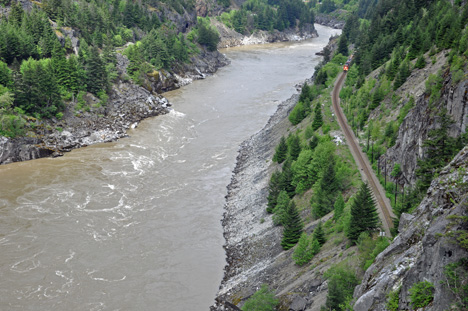 |
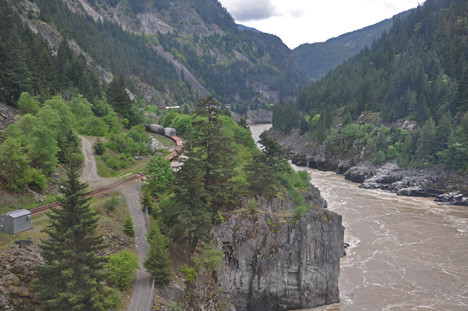 |
Below: Views of the bridge across the river and a train on the tracks just above the river bank. |
|
 |
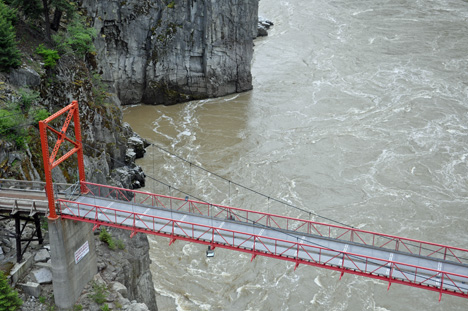 |
Below; The white sign beneath
the bridge shows how high the river reached on May 29, 1948. |
|
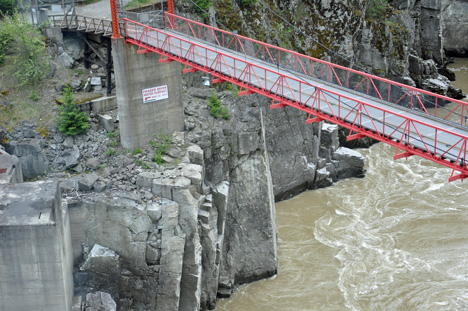 |
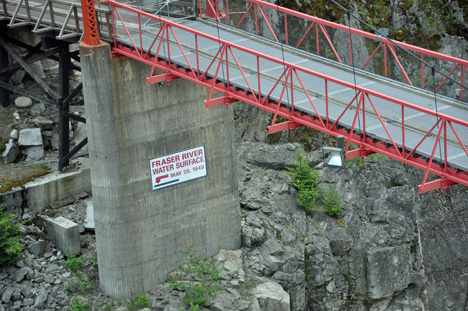 |
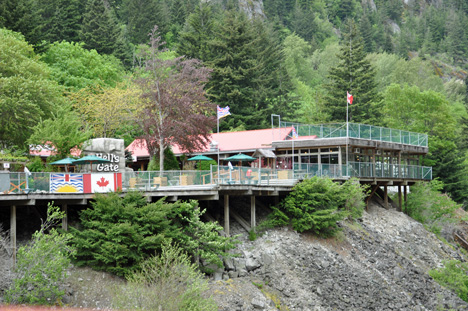 |
|
Below: Views from the bridge |
|
 |
 |
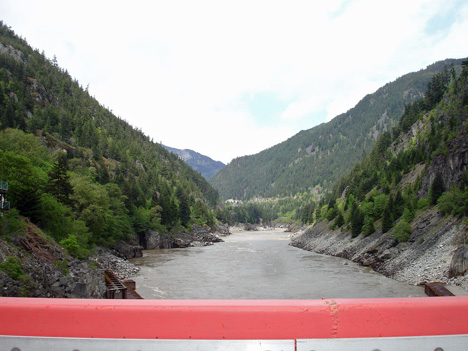 |
|
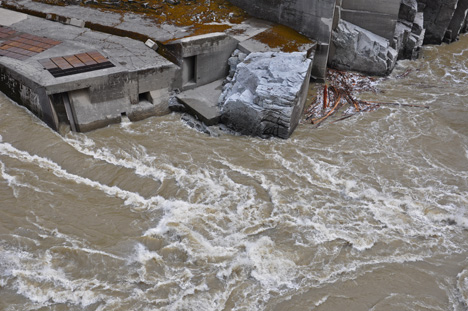 |
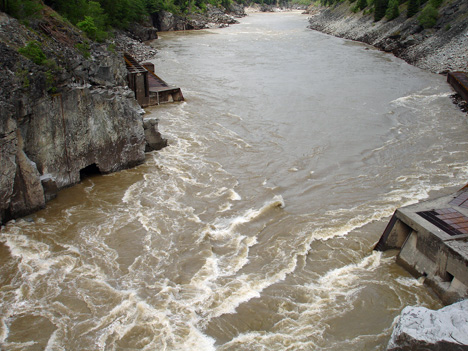 |
Below: Views taken from the
tram ride down - a train going through a tunnel- there are train tracks
on both sides of the river. |
|
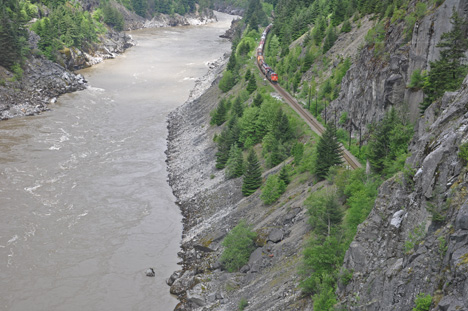 |
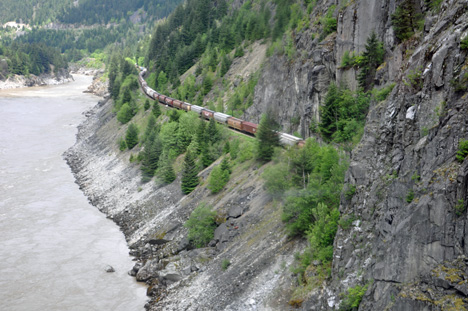 |
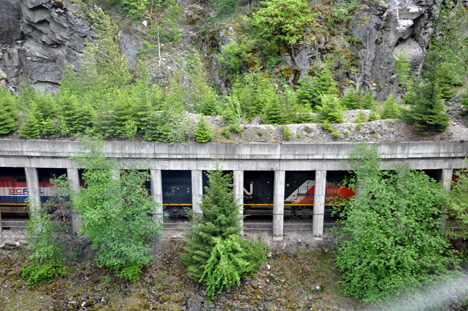 |
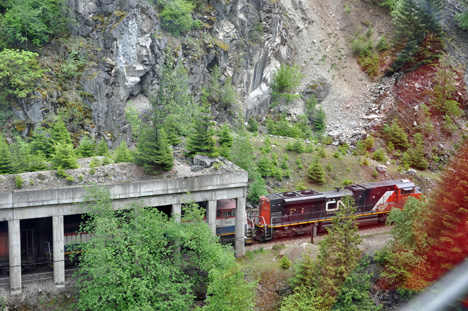 |
Below; A train on the other
side of the river - photographed from the visitor's area at the bottom
by the bridge. |
|
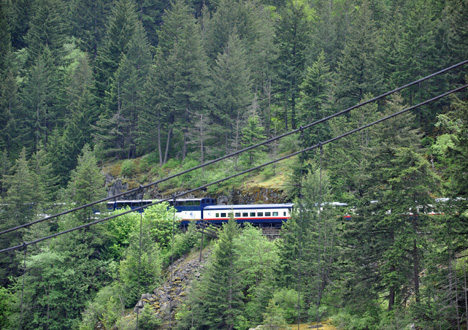 |
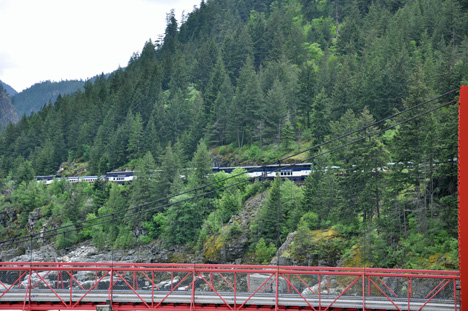 |
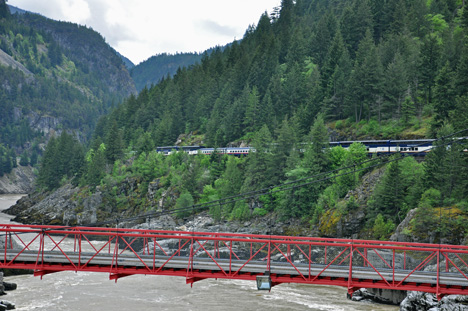 |
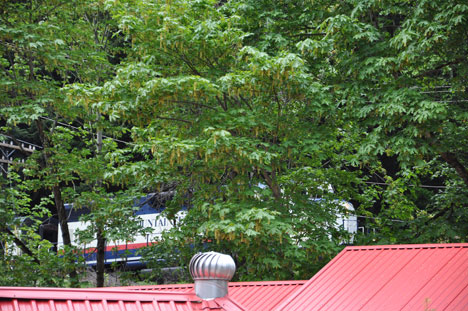 |
| Below: The two RV Gypsies on the suspension
bridge at Hell's Gate. |
|
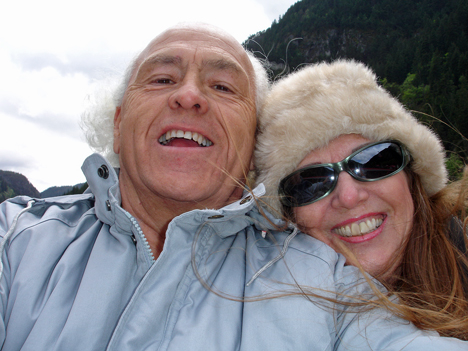 |
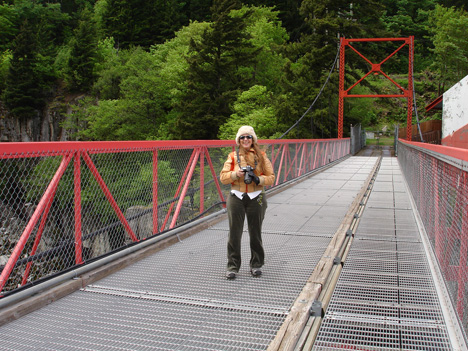 |
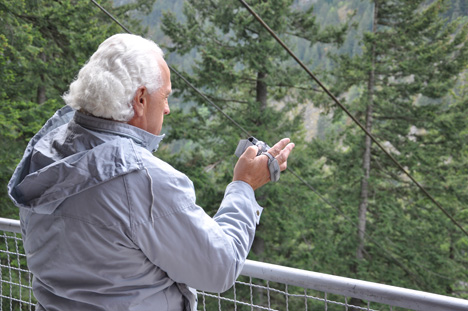 |
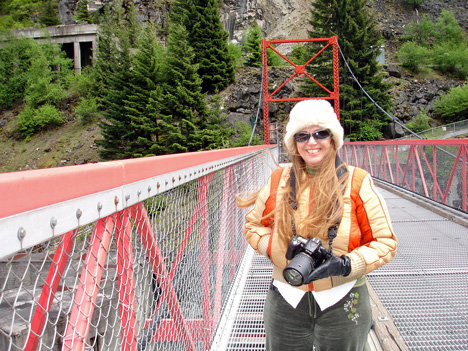 |
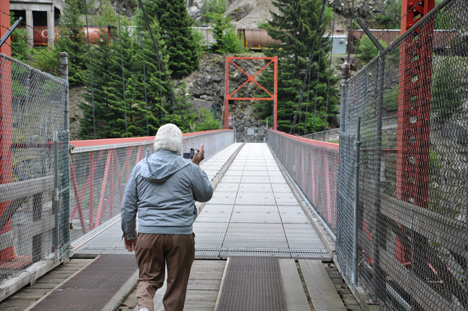 |
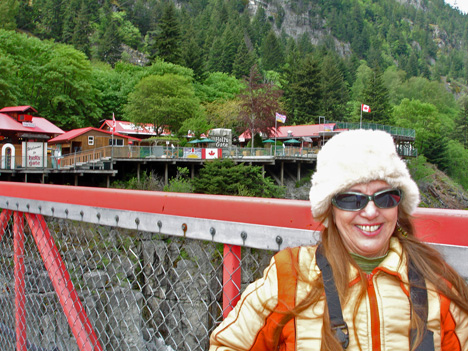 |
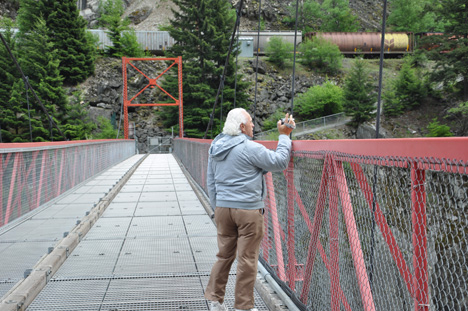 |
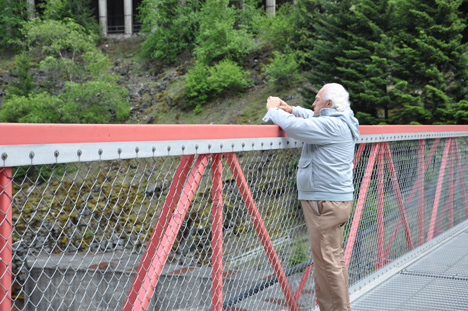 |
| Below: View of the river looking straight down through the grate on the bottom of the bridge, and through the side fencing. | |
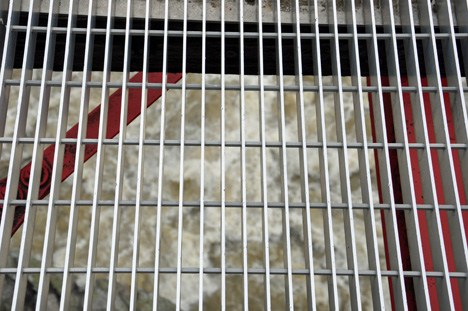 |
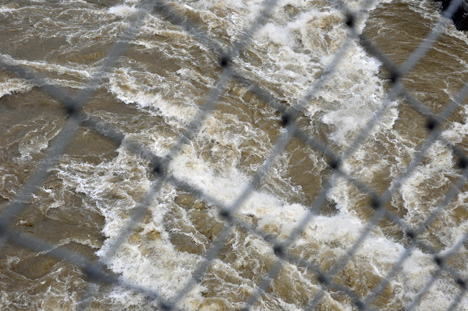 |
Below: Lee Duquette braved
the heavy winds to take photos - check out his hairdo. |
|
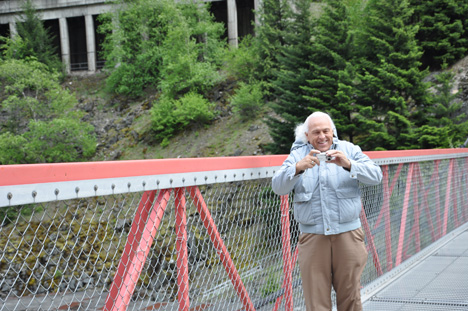 |
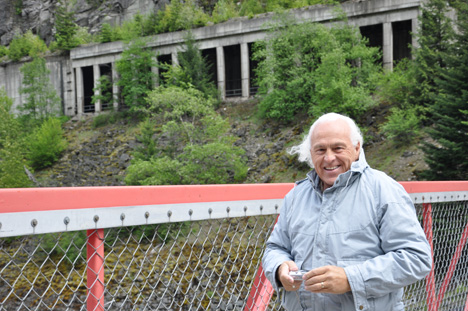 |
Below: View of the bridge
from the visitor's area. |
|
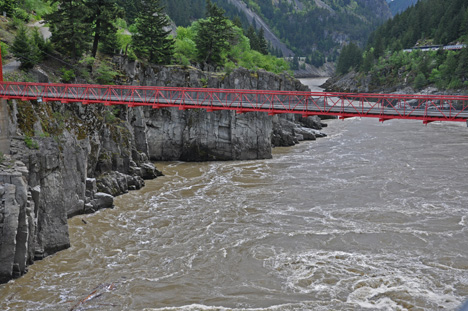 |
 |
| Below: Photos from the visitor's area
and a bit of history and legends |
|
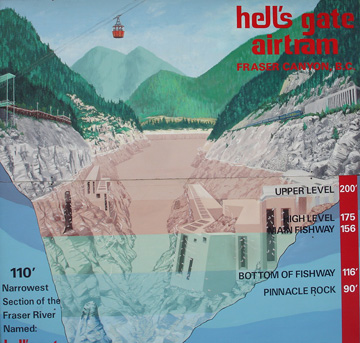 |
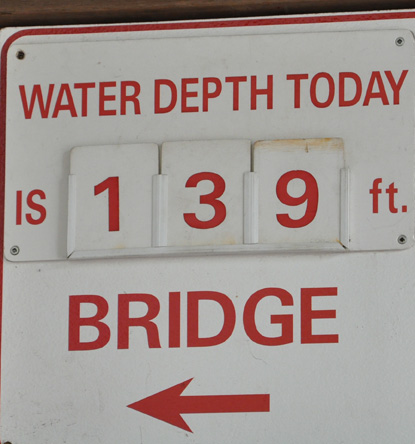 |
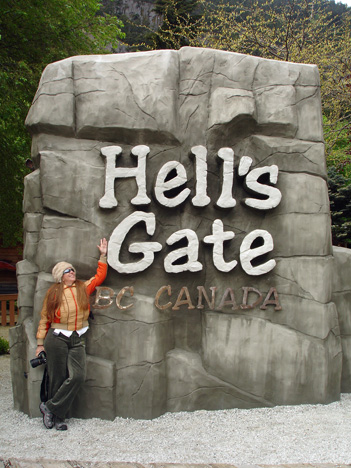 |
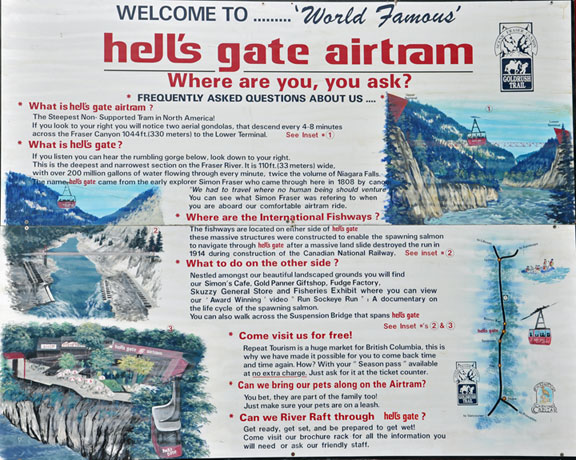 |
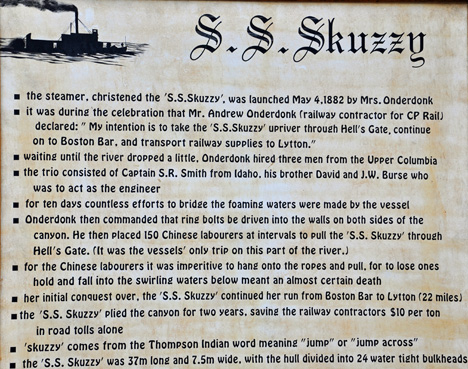 |
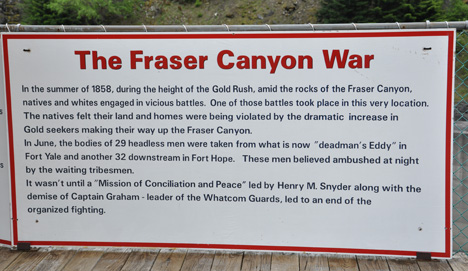 |
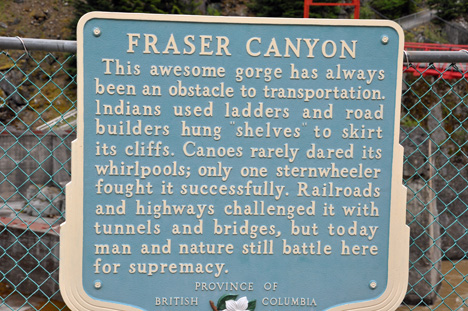 |
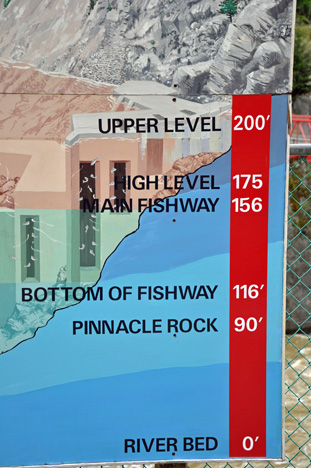 |
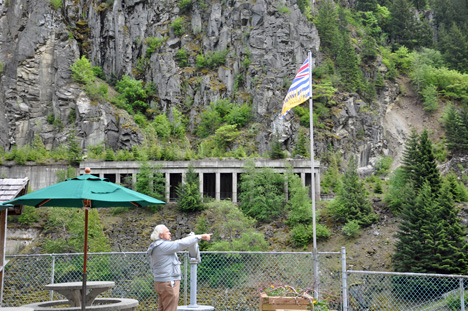 |
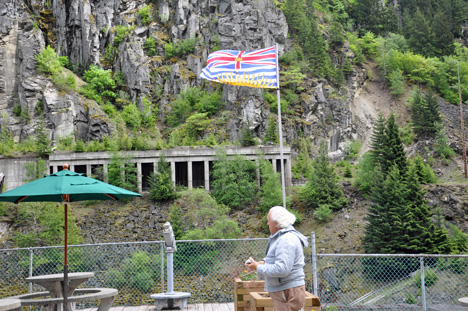 |
| In 1808 Simon Fraser and his voyagers battled their way through this rugged area in search of an alternate fur trading route to the Pacific Ocean. According to historic documents and Simon's journal, the following quote was nervously inscribed "We had to travel where no human being should ever venture for surely we have encountered the gates of hell." | |
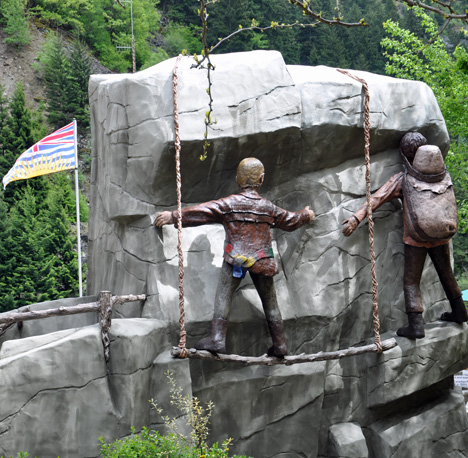 |
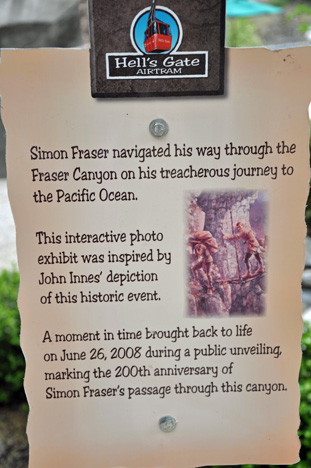 |
Below: Karen Duquette
had some fun being silly, plus some great paintings. |
|
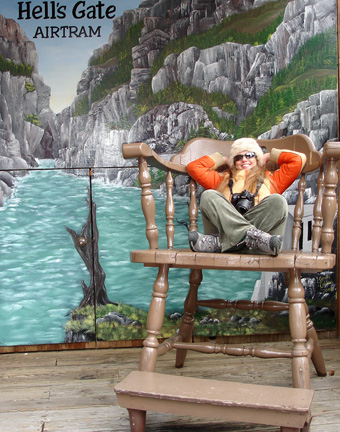 |
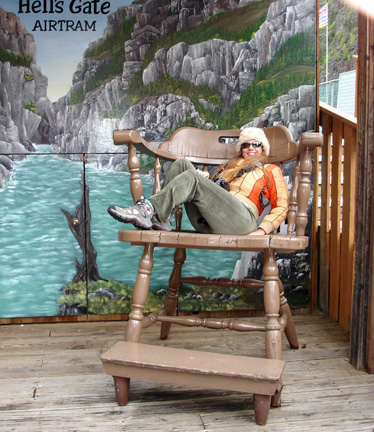 |
 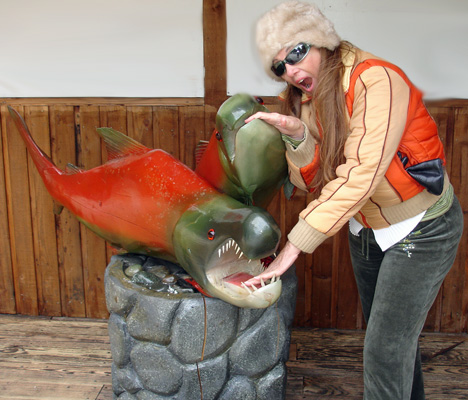 |
|
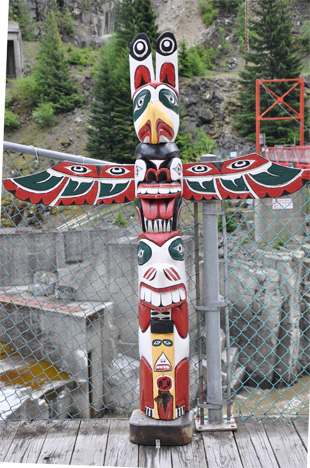 |
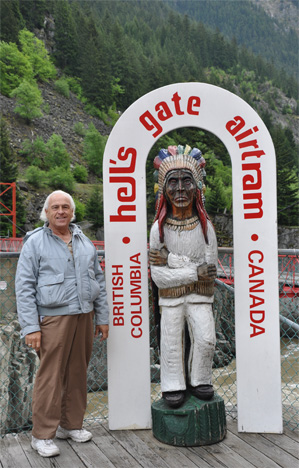 |
|
Below: The photos
below are PAINTINGS on walls. Even the tram is a painting. |
|
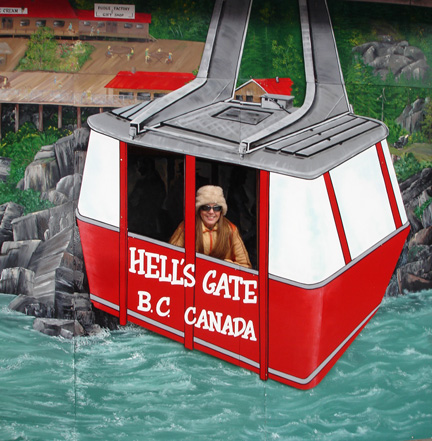 |
|
 |
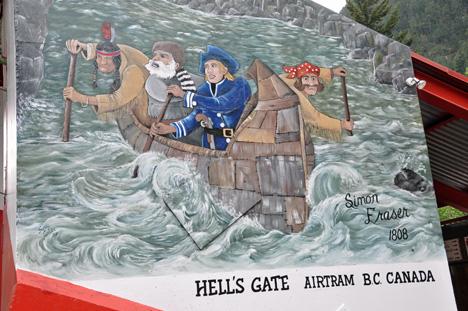 |
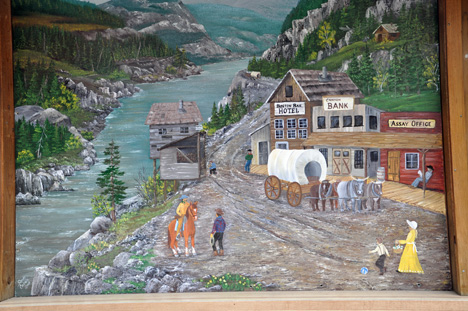 |
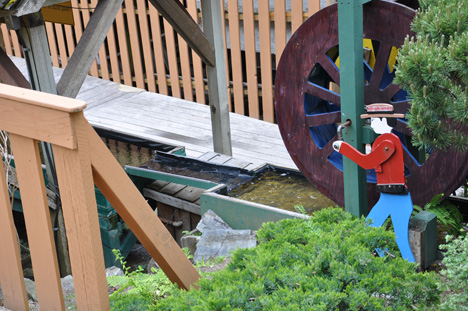 |
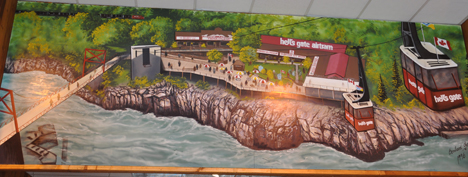 |
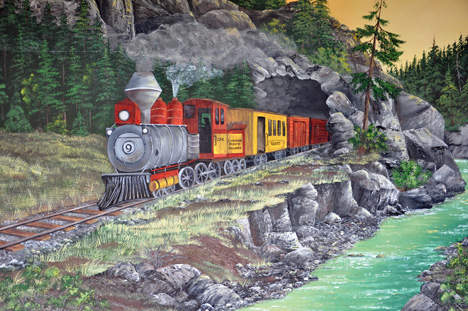 |
Below: THE FUDGE FACTORY |
|
 |
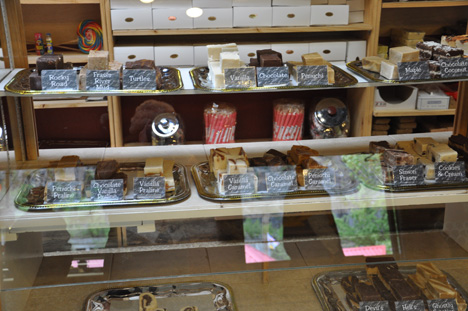 |
| |||||||||||||||||||||||||||||||||||||||||||